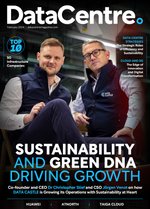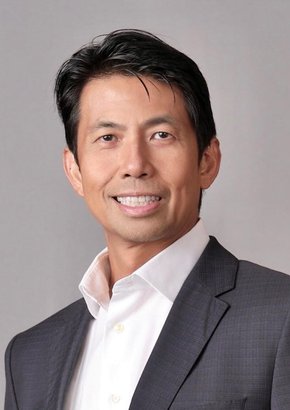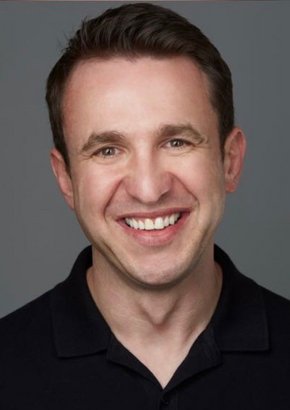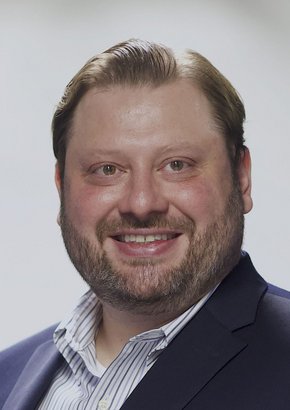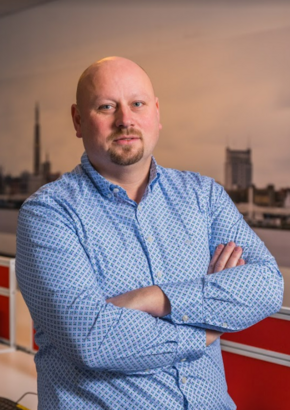
Charles Ferland
VP and General Manager of Edge Computing & Telecom at Lenovo
Global technology conglomerate, Lenovo, stands as a major player and leader in the tech industry. With an impressive #217 ranking in the prestigious Fortune Global 500, the company operates on a massive scale, employing a workforce of 77,000 individuals spread across the globe. Its extensive reach extends to 180 markets, where it diligently caters to the needs of millions of customers daily.
In an exclusive interview with Data Centre Magazine, we spoke with Charles Ferland, an IT professional with over 25 years of experience in leadership roles, particularly in software-defined networking (SDN) and networking technologies. He currently heads Lenovo's DCG Edge & Telco segment, driving strategy, product development, and go-to-market initiatives.
Q: Can you provide us with a short summary of your previous experience and how you came to be at Lenovo?
“I started at Lenovo in 2018 when I came from Nokia with a networking and telecom background. I'm the general manager of what we call our ‘think Edge business unit’, which is all the edge product strategy, and partnership hardware software that we've put into edge computing.
“I came to Lenovo with the mission to lead our fourth customer segment. We've expanded our customer segmentation with a new category: Communication Service Providers (CSPs) or telcos. This dedicated team focuses on managing all aspects of our relationships with these companies, ensuring seamless collaboration and value creation.”
Q: How will the launch of Lenovo TruScale for Edge and AI services transform the way businesses approach AI adoption and utilisation?
“So one of the key advantages of working with Lenovo is we're not forcing our customers into one direction or one preference or another. TruScale is a consumption based model offering monthly fees that will vary depending on utilisation. For example, retail will have months that naturally have more sales, more transactions, and therefore more revenue. This means their capacity to pay for a TruScale service increases as well. However, during the slower months, the expenses of TruScale match their revenue stream. Offering a TruScale option gives the ability to move all of the customers, retailers, and sites at once and still spread their payment over a period of time.”
Q: How will Lenovo's edge computing solutions provide an as-a-service model that offers end-to-end services from deployment to refresh?
“Edge computing tends to be very centralised, but the reality is very distributed. Lenovo's ability to do services in the 180 market, to do physical installation, is key to some of our success. Because for a UK-based company, they can have branch offices or locations all over the world, and they will have a single service contract with Lenovo and the ability, to the same terms and conditions, whether it's deployed in Brazil or Taiwan, for example.
“The other value is that within TruScale, we can bundle more than just Lenovo hardware. What I mean by this is often these solutions will have third-party AI software for example, there'll be some networking element, and there might be some cameras and other sensors. Not only is the Lenovo hardware part of the TruScale offering, but we're able to bundle and charge on a consumption based model all of the components of the solution, not just the Lenovo branded products.”
Q: How is Lenovo’s comprehensive portfolio designed to simplify the edge infrastructure journey with expert services delivered globally?
“We probably have the most comprehensive hardware portfolio in the market, which makes a difference. I keep using retail as an example, but many of these sites will be different in size. You'll have pop-up restaurants and you'll have full-blown restaurants, therefore having a one-size-fits-all on hardware is not appropriate.
“We have invested in multiple products that can address sites that will have a few cameras, for example, to sites that will have hundreds of cameras. That is the first step in addressing the right price point by having the different types of capacity there.
“The other thing is we build a portfolio for expansion. If you're looking at the ThinkEdge SE360 for example, it's a device that has an Intel GPU inside and you can start your AI journey with that. Only if at one point you're adding more workloads that are more video intensive and you want to add a GPU, well, you can add up to two GPUs in that product.
“On the SE450 we can support up to four GPUs. And on the SE455, which is our new AMD edge server, we can support up to six GPUs. Then you can reach the capacity of a mega-store with hundreds of cameras and a lot of data, all of that on one platform.”
Q: What innovative technologies and capabilities does Lenovo's ThinkEdge portfolio offer, particularly its noise-cancelling features that are setting new standards in the market?
“It's the attention to detail that makes a difference. One feedback we had was about sound. We have all of that compute capability, but if you bring it into the manager's office, into a retail store or a kitchen in a restaurant, that is never going to work.
“We have several engineers who have worked for several months and years working on airflow and how to dissipate heat more effectively, and how to use some creative technology to reduce the noise using different materials and different air patterns inside the servers.
“Then we looked at the security aspect. Data centres are pretty much fences. There is a locked door with biometrics and security guards, but now you're taking that same compute and you're putting it into a restaurant where it's a lot more accessible. We put features that secure the device and the data itself. For example, we have a lockable bezel in front of the server. You can put a bezel that you lock with a key, so nobody has access to the cables and to the USB port. We found many times people were charging their phones on the USB port! It doesn't break the server, but it's not what it's there for.
“We've put motion detection inside of the server as well. If somebody steals the device, the data is encrypted and the motion detector is triggered, therefore the data is locked up and the server is blocked. The thief cannot have access to the data, they cannot boot the system, it simply won't start.”
Q: How is Lenovo's ThinkEdge portfolio revolutionising edge computing and shaping the future of smart cities like Barcelona?
“Smart infrastructure, in general, is becoming very popular and it's mainly about enhancing the quality of life and security. We've done several projects around smart cities. These cities typically have cameras which capture so much information, but it's too much information to take any action.
“The idea is to distribute some of the compute capability throughout the environment, process the information locally, detect, for example, if somebody is standing in the street with the two hands in the air, that might be a moment of interest and at that point, the video is related to a central operation centre for a human to look at. Is it just kids playing, or is it a robbery?
“The point is how do I improve the security of the city and how do I improve the quality of life by optimising the traffic flow within a city? Well, one use case is Barcelona, where visually impaired people can walk down the street using glasses with cameras on them. Using a Motorola phone which relays to a private 5G network, the cameras capture the video feed in real-time, relaying this to a few 100 metres at the servers on the corner of the street.”
******
Make sure you check out the latest edition of Data Centre Magazine and also sign up to our global conference series - Tech & AI LIVE 2024
******
Data Centre Magazine is a BizClik brand
Featured Interviews
“Our ESG and DE&I programs are pivotal to ensuring that we not only strive to deliver excellence in data centre development and operations, but we also provide a welcoming and thriving work environment for our people along with developing strong connections with the communities in which we operate.”

